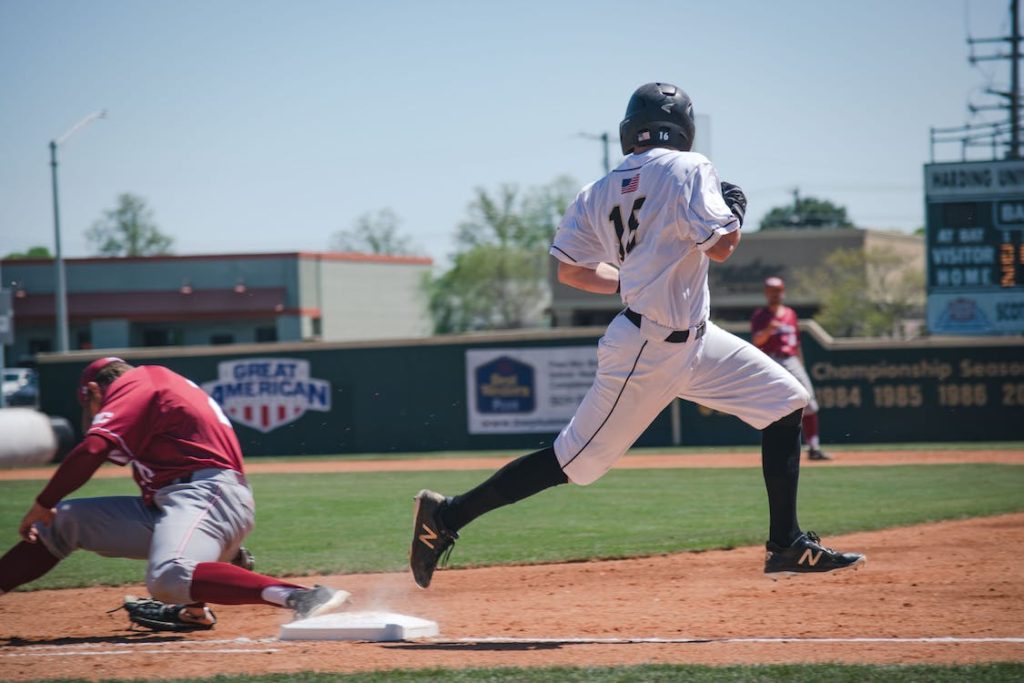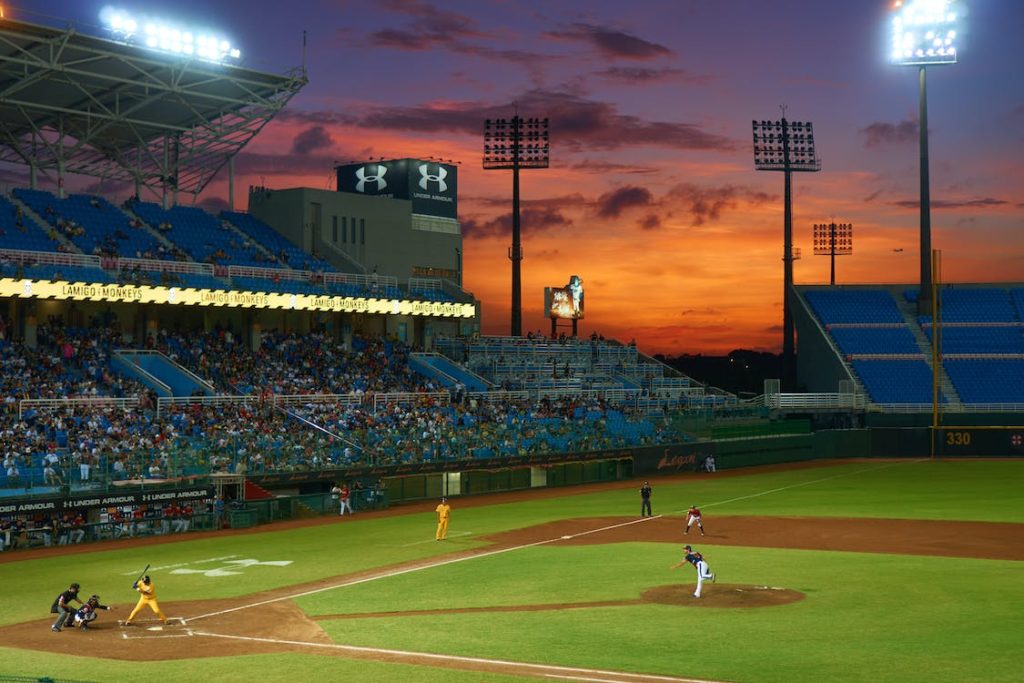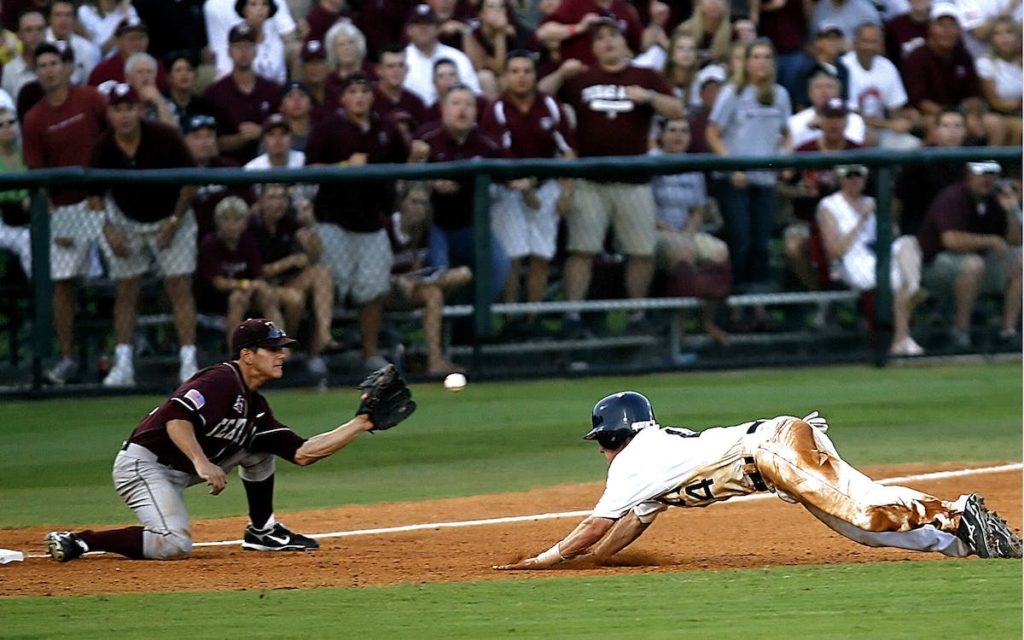I still remember standing on the field, bat in hand, as games extended beyond the usual nine innings.
The atmosphere would change; the crowd’s casual excitement would turn into intense suspense. Believe me, the adrenaline rush in those moments is incomparable.
Now, as I am working as a school coach, young players often ask me with excitement, “How many extra innings in baseball?” I always respond, “We play until there’s a winner. No shortcuts.”
Though a baseball match can be tied but that is a rare case.

So, if you wanna know about the number of extra innings in baseball, keep reading. I’ll share insights from both my playing and coaching days. Let’s get into it!
How Many Extra Innings Are in a Baseball Game?
In Major League Baseball, a regular game is nine innings long. Every inning has two parts:
- In the top half, the visiting team bats,
- In the bottom half, the home team gets its turn.
Each half-inning continues until three outs are made. Then, the game moves on to the next inning. This cycle repeats until all nine innings are complete.
In the ninth inning, if the home team is already leading after the visiting team has batted, the game can end without the need for the bottom of the ninth. This is because the home team has already secured the win and doesn’t need to bat again.
But what if it’s a tie at the end of those nine? We head into ‘Extra innings.’
And “Is there a limit to how many extra innings a game can have?” No! In baseball, we play until there is a clear winner. The game rolls on, inning by inning until one team finishes an inning with more runs than the other.
MLB Extra Innings Rule
The extra innings rule in MLB has been a topic of discussion for quite some time. MLB has implemented the “ghost runner” rule for the regular season to speed up the game and avoid marathon matches.
When I was playing, we didn’t have anything like the Ghost Runner rule. We had to hustle for every run. But the game evolves, and so do its rules.
As per a recent update, MLB has made the extra-innings tiebreaker rule permanent starting from the 2023 season.
This rule was initially introduced during the 60-game pandemic season in 2020 to shorten games and reduce the risk of disease. It remained temporary for 2021 and 2022 but has now been cemented into the rulebook.
Ghost Runner
How does the “ghost runner” rule work? Once in the 10th inning, a runner is automatically placed on second base at the beginning of each half-inning.
This runner is usually the player who is immediately preceding that half-innings leadoff hitter or a pinch-runner. Let’s say if your No. 7 hitter is leading off the inning, the No. 6 guy in the lineup will take his spot on second.
As a coach, this rule has forced me to rethink my strategies. Do I play it safe and move the runner over to third? Or do I swing for the fences? Each decision feels magnified, and I have to admit, it adds a fun twist.

Oh, and if you’re thinking, who gets blamed if that ghost runner scores? Not the pitcher. That run is not considered an earned run against them. A small comfort for those on the mound, I suppose.
Before this rule, about 10% of regular-season games went into extra innings. Now, we are seeing fewer marathon games. Only seven games have lasted 13 innings or more in the last three seasons, compared to 37 such games in 2019 alone.
So, is the Ghost Runner rule good or bad for baseball? Opinions are divided. Some fans love the excitement it brings, while purists like me feel it alters the game’s integrity.
But rules are rules, and as a coach, it is my job to adapt and teach my players how to make the most of it.
MLB Post-Season Extra Innings Rule
In the MLB postseason, the automatic runner rule does not apply during the playoffs.
In post-season extra innings, the bases start empty, just like they would in a standard inning. So, to win, you have got to earn those runs the hard way. What it means? No help from an automatic runner at second base.

This is to maintain the integrity and excitement of the post-season. The league wants the best teams to win based on skill and strategy, not because of a rule designed to speed things up during the 162-game regular season grind.
Personally, I love this approach. In the postseason, the tension is through the roof, and every moment counts. Removing the automatic runner keeps the focus on raw talent and strategic plays, just like how we did it back in the day.
Extra Innings Rules In Other Tournaments
College Baseball Extra Innings
In college baseball, the extra innings rule is similar to MLB, following 2021. Just like in the MLB, each half-inning in college baseball regular season starts with a runner already on second base.
There are no outs when this happens. The runner who starts on second is the player who made the last out in the previous inning. This rule aims to give both teams an equal shot at scoring runs and hopefully ending the game sooner.
As a coach, I find this rule adds an extra layer of strategy to the game. Do you bunt the runner over to third, or do you let your power hitters try to bring him home? It’s a decision that can make or break the game.
However, in postseason games, college baseball drops the ghost runner rule. In these games, each extra inning starts the traditional way, with no runners on base. The game continues like that until a winner is decided.
World Baseball Classic Extra Innings
The World Baseball Classic (WBC) has introduced a new set of rules for extra innings, too.
According to the updated rules:
- Starting from the 10th inning, the team at bat will have an automatic runner on second base.
- The automatic runner will be the player who immediately precedes the batter at the plate.
- Suppose the No. 3 hitter is due to lead off the 10th inning. Then, the No. 2 hitter will be placed on second base.
These rules were inspired by MLB, which implemented the same rule in 2020 to speed up games and reduce player exposure during the COVID-19 pandemic.
In previous WBCs, teams had runners on both first and second base starting from the 11th inning. However, this has been changed to align more closely with MLB rules.
Drawing from my own experiences on the field, this rule turns the intensity up to eleven. Every pitch matters even more, and the room for error is slim to none.
When Do Extra Innings End?
Extra innings end when one team has more runs than the other at the end of a completed inning. However, with the new tiebreaker rule, games are generally shorter.
In the postseason, though, the ghost runner rule does not apply. So, those games can stretch out a bit more, adding to the drama and excitement of playoff baseball.
Strategies in Extra Innings
Let me now share some strategies with you that I’ve picked up over the years, both as a player and as a coach.
1. Conservation of Pitchers
In extra innings, your bullpen is your lifeline. If you’ve got a guy who can go multiple innings, that’s gold. But remember, don’t burn out your best arms early; you might need them for the long haul.
2. Play Small Ball
With the “ghost runner” rule in place, the small ball becomes even more critical. A well-placed bunt can move the runner from second to third, putting your team in a prime position to score. Sacrifice flies, squeeze plays, you name it. Sometimes, playing it safe is the smart move.

3. Pinch Hitters and Runners
Extra innings are a great time to utilize your bench. Got a guy who is fast but not a great hitter? Use him as a pinch-runner. A good pinch-hitter can also be a game-changer, specifically against a tiring pitcher.
4. Defensive Shifts
By the time you are in extra innings, you have seen the opposing hitters a few times. You know their tendencies. Use this to your advantage with defensive shifts. But be cautious! One mistake can cost you the game.
5. Know the Rules
This might sound basic, but you’d be surprised how many people are not fully aware of the extra innings rules, especially the ‘ghost runner’ one. Make sure your team knows the rules inside and out to avoid costly mistakes.
6. Mind Games
In a long game, morale can dip. Celebrate the small victories, maybe a great catch, a clutch strikeout, and a smart base-running decision. These can lift the team’s spirits and keep everyone engaged.
7. Prepare for the Unexpected
In extra innings, anything can happen. A wild pitch, a passed ball, a sudden rain delay. Be prepared for the unexpected and use it to your advantage.
Memorable Extra-Inning Games
There are many games in baseball history that are a testament to the drama that extra innings can provide.
1. Cubs vs. Cardinals, 1984
This match is iconic for Cubs fans. Ryne Sandberg, the Cub’s second baseman, hit two game-tying home runs off Cardinals’ closer Bruce Sutter. The Cubs eventually won 12-11 in 11 innings.
2. White Sox vs. Brewers, 1984
This game is one of the longest in MLB history, going 25 innings. It featured five future Hall of Famers. Both teams had ample chances to win, but it seemed neither wanted to give in. The White Sox eventually won 7-6.
3. Cubs vs. Indians, 2016 World Series Game 7
The Cubs had been waiting for over 100 years to win a championship, making this match tense. It went into extra innings tied at 6-6. The Cubs scored two runs in the 10th inning and won 8-7. This win changed history for the Cubs.
4. Rockies vs. Padres, 2007 NL Wild Card Tiebreaker
This game was an emotional rollercoaster that had fans biting their nails till the end. The Rockies were behind but managed a spectacular comeback.
They pulled off another comeback in the 13th inning, earning them a first-ever trip to the World Series.
5. Phillies vs. Cubs, 1979
This one was crazy. The Phillies and Cubs kept the scoreboard operators busy, with the teams combining for 45 runs. Mike Schmidt from the Phillies hit a home run in the 10th inning. They won 23-22. This is the highest-scoring game in extra innings ever in MLB.
Frequently Asked Questions (FAQs) About How Many Extra Innings In Baseball
1. Is Baseball 8 or 9 Innings?
A standard MLB game is 9 innings. If the game is tied at the end of these, it goes into extra innings.
2. Can there be 12 innings in baseball?
Yes! A game can certainly extend to 12 innings, or even more, until a winner is determined.
3. Can a baseball game end in the 7th inning?
Yes! If it is a scheduled doubleheader, the game can be just 7 innings long. These games are intense from the start, knowing you have less time to make your mark.
4. Are extra innings the same in baseball double headers?
In doubleheaders, the extra innings rule with a “ghost runner” still applies. It’s a quick transition from one game to the next, and maintaining focus is crucial.
My Opinion on How Many Extra Innings In Baseball
Being both a former player and now a school coach, I can attest to the thrill of a game that goes into extra innings. Some argue that extra innings should be limited to speed up the game, but I disagree.
I always tell my players, “Baseball is a marathon.” And in a marathon, you need energy, strategy, and the will to keep going. Extra innings test all of that. Your pitcher has to be sharp, fielders alert, and hitters ready to seize opportunities.
So, if you find yourself in a game that is stretching into the 12th or 13th inning, embrace it. Enjoy the challenge it brings. Trust me, the longer the game goes on, the sweeter the win will feel.
More Resources
Major League Baseball Rain Delay Rules
How Many Games In The MLB Season
How Many Pitchers Are On An MLB Team
How To Read A Baseball Scoreboard

Hello everyone. My name is Jason Butler, and I live in California, America. I was a professional AAA Minor League Baseball player. I lost my chance of playing MLB for injury issues, but I did not lose my love for baseball. I attended the coaching training program and am now working as a coach in a small school in San Diego.
I always love to share my experience and knowledge if that can help you. Play baseball, and stay fit.